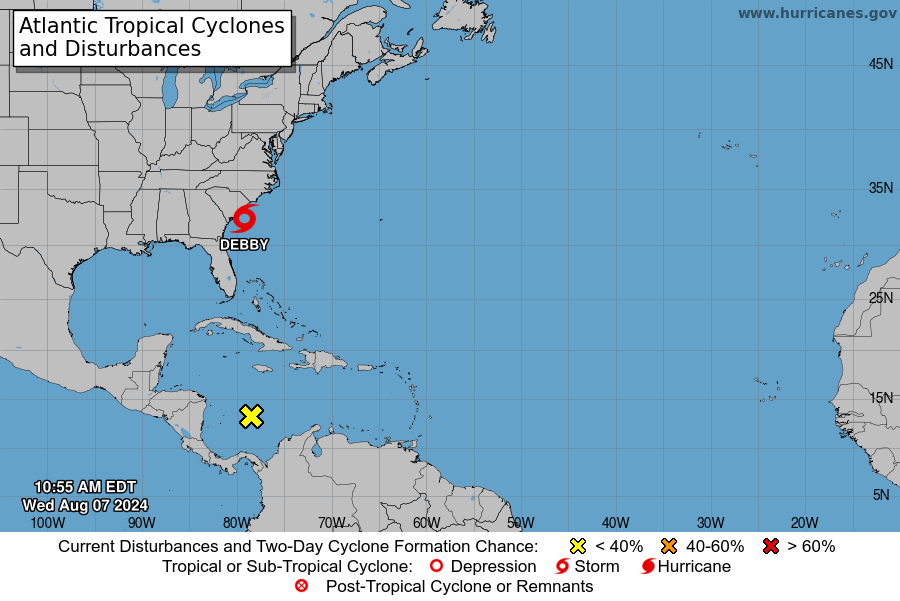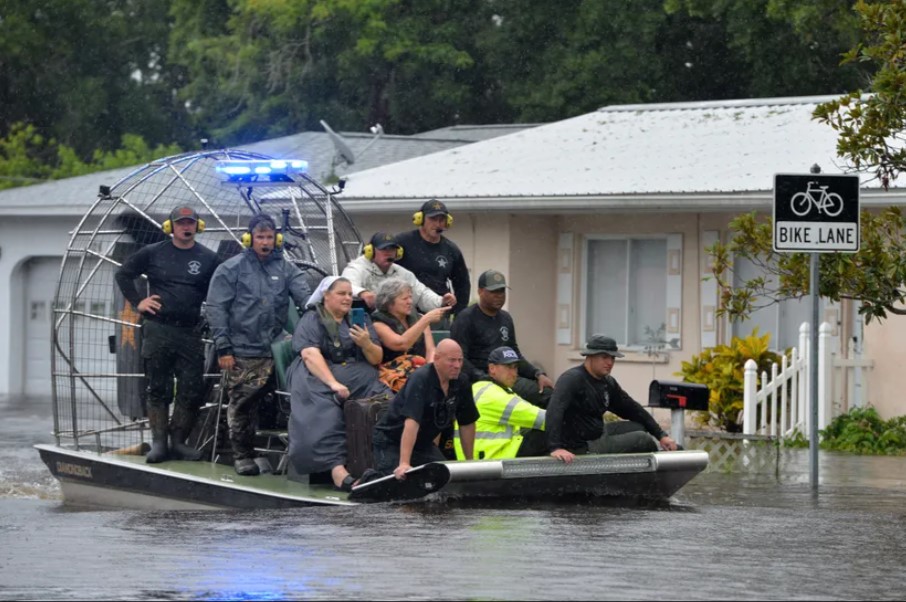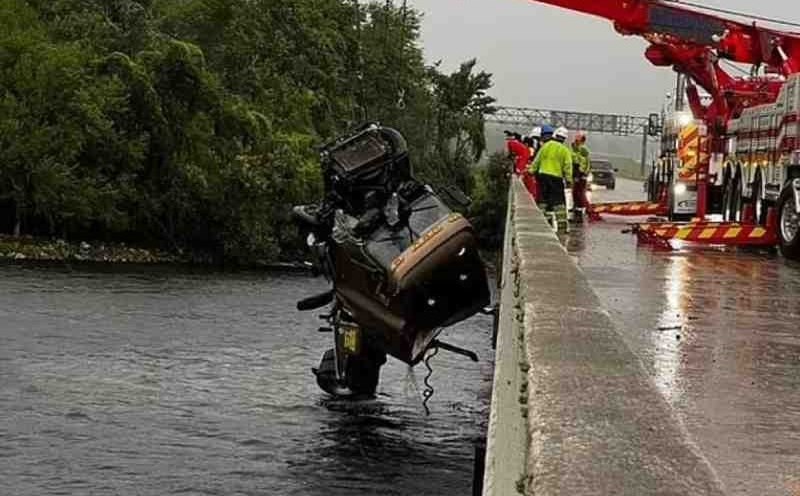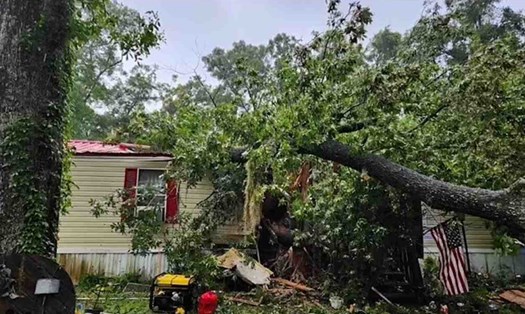According to the latest update from the National Hurricane Center (NHC), Tropical Storm Debby has intensified and is approaching the southeastern coast of the United States, posing a significant flood threat to the Carolinas region.
At 11:00 AM on August 7 (local time), the storm's center was located approximately 85 km southeast of Charleston, South Carolina, and 160 km south of Myrtle Beach.
The storm is moving northeast at a speed of 7 km/h, with sustained winds of up to 95 km/h.

Forecasters predict that Debby will make landfall on the southeastern coast of the United States on the evening of August 7 or early August 8 (local time). The storm will then move faster north and northeast through the Carolinas and the Mid-Atlantic states over the next two days.
The greatest threat from Tropical Storm Debby is heavy rainfall and the risk of severe flooding.
Forecasters predict that rainfall will continue to increase from approximately 7.63 to 22.86 cm, with total rainfall from the storm potentially reaching 63.5 cm in South Carolina and 38.1 cm in eastern North Carolina.
Experts at the NHC warn of a significant risk of flash flooding and urban flooding, as well as the possibility of river flooding. Residents and tourists in the affected area are advised to closely monitor local weather forecasts and follow any evacuation instructions if issued.
Additionally, there is a possibility of one or two tornadoes in eastern North Carolina and the far eastern part of South Carolina on the evening of August 7 (local time). Large waves will also continue to affect the eastern coast of the United States in the coming days, posing a risk of large waves and hazardous rip currents.
In light of the complex weather situation, tourists should pay close attention to regular weather updates and storm warnings from official authorities.
If you have travel plans to the affected area, consider postponing or changing your itinerary. For tourists already in areas that may be affected, follow local government instructions and warnings.
Avoid coastal areas, rivers, and streams that are at risk of flooding and be prepared to evacuate if required. Tourists should also maintain contact with their embassy or consulate for support if needed.

Ensure important documents are safely stored and easily accessible in case of an emergency. Update information on traffic, flight, and public transportation disruptions that may be affected.
If you are on an island or coastal area, consider moving to a safer location before the weather worsens.
Tourists should always remain vigilant and prioritize their safety in all situations.






